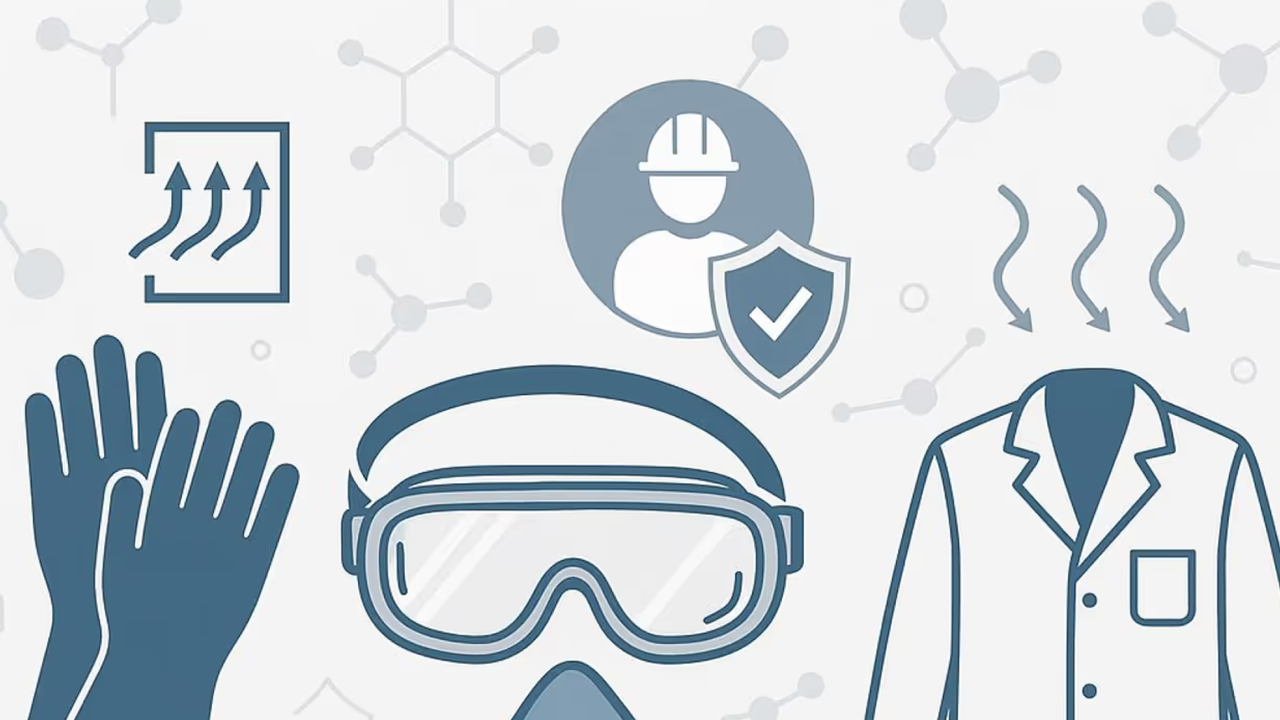
Section 8 of the Safety Data Sheet often reads like a checklist:
“Wear gloves.” “Use local exhaust ventilation.” “Avoid breathing vapours.”
Simple? Not quite.
Behind each of those short lines lies a world of detail: exposure scenarios, toxicological thresholds, and regulatory expectations. For SHEQ managers, Section 8 isn’t a formality. It’s the foundation of a safe workplace.
Section 8 (Exposure Controls / Personal Protection) is the bridge between hazard information and real-world risk management.
It answers one question:
“Given the hazards of this substance or mixture, what must I do to keep exposure under control?”
Under REACH, suppliers must describe appropriate control measures and protective equipment based on the chemical’s DNELs, OELs, and use patterns. That makes Section 8 the go-to place for everything from ventilation needs to glove types and respirator classes.
Let’s unpack what this section contains and why each part matters.
This is where you’ll find exposure limits:
These numbers are your reference points. They define what “safe exposure” means. SHEQ managers use them to compare with workplace measurements, ensuring control measures are effective.
If DNELs or OELs are missing, be cautious. It might indicate a low-quality SDS or a need for manual lookup.
Here the SDS moves from numbers to action. You’ll see recommendations such as:
Each recommendation should be specific. Vague instructions (“use suitable gloves”) don’t help. For true compliance, you need materials, breakthrough times, and test standards.
The PPE part of Section 8 is often treated as a formality, but it’s one of the most practical tools for SHEQ managers.
Choosing the right gloves depends on:
A note of caution: If the SDS simply says “use protective gloves,” that’s not enough. You need specific material recommendations for meaningful protection.
Section 8 should indicate:
For airborne hazards, check that the recommended PPE aligns with the OEL or DNEL values listed earlier.
Look for EN 166 compliance, and ensure compatibility with other PPE.
In splash-prone processes, goggles or face shields aren’t optional; they’re critical.
Section 8 isn’t just about compliance; it’s about decision-making.
Here’s how a SHEQ manager typically uses it:
It’s a continuous improvement loop, and Section 8 is your roadmap.
And when in doubt? Better safe than sorry.
Choosing a more conservative control measure or stricter PPE standard may feel cautious, but it’s the simplest way to stay ahead of risk.
Not every SDS gives you what you need. Some omit OELs. Others list only generic PPE advice without test standards or material details.
If the SDS wasn’t authored using a professional platform, critical data may be missing, forcing SHEQ managers to manually research exposure limits or consult PPE manufacturer data.
At NextSDS, we make sure you don’t have to fill in the blanks.
Our platform automatically extracts every component from the SDS and maps it to our extensive CAS database. From there, we enrich your dataset with:
That means you can instantly see if Section 8 is complete, identify missing data, and make informed decisions about engineering controls or PPE without hours of manual searching.
For SHEQ managers, it’s the difference between reactive compliance and proactive protection.
Section 8 is where science meets safety: exposure limits (DNELs & OELs), control measures, and PPE all converge to protect workers.
With NextSDS, you can be confident the data you rely on is accurate, structured, and actionable.
Want to see how NextSDS can help you unlock the full value of Section 8? Get in touch with us.